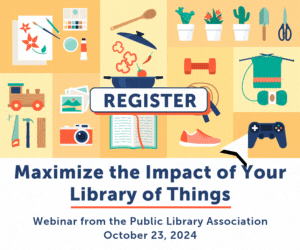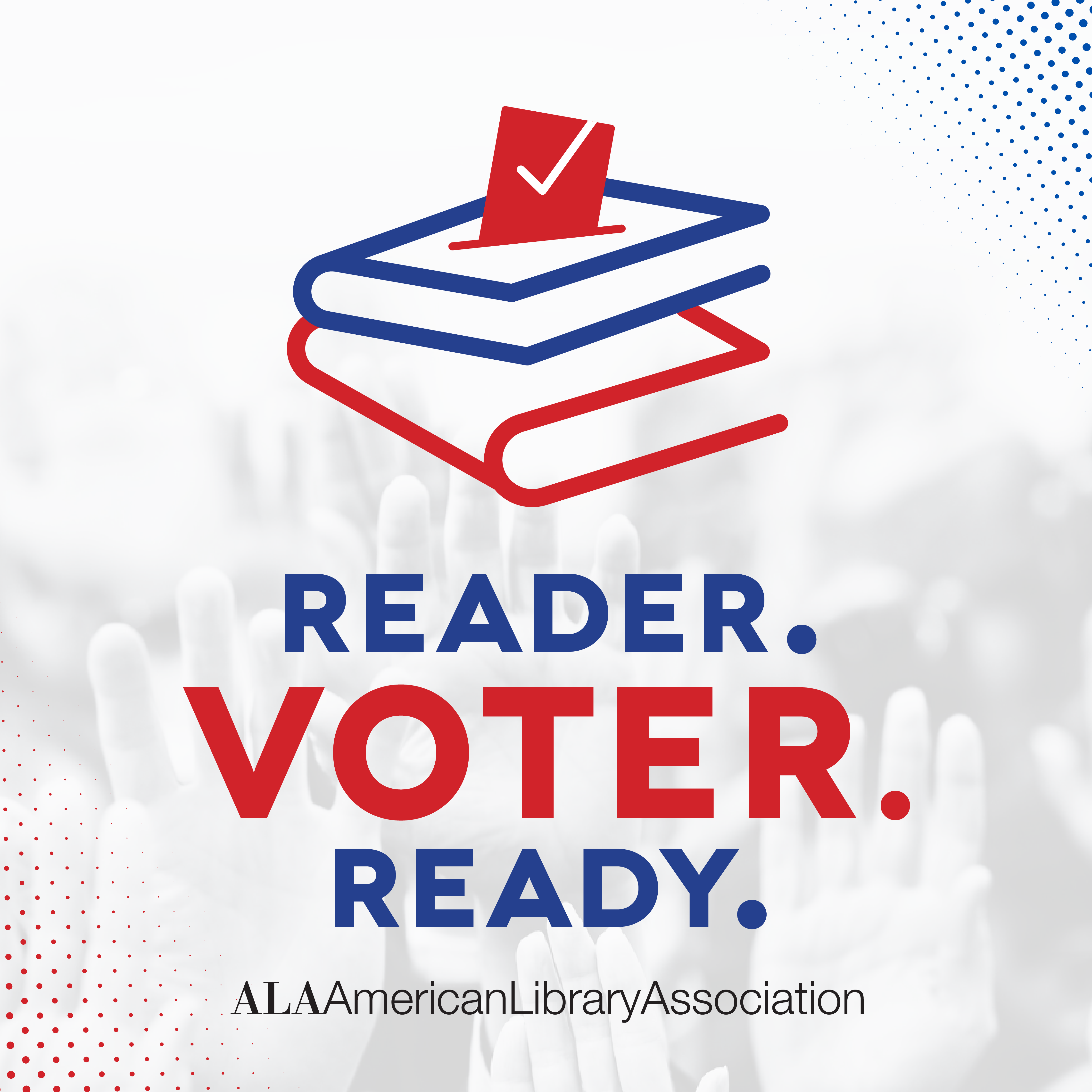Jack of All Trades Readers’ Advisory: How to Learn a Little About a Lot
When it comes to the study of readers’ advisory, there is plenty of sage advice out there on the theory of helping someone find a book. It’s important to get to know what your reader is in the mood for. Try to understand what your reader is looking for by asking questions regarding what they’ve read recently, what they enjoy or don’t enjoy in their books, what are some of their favorite books and authors? All readers’ advisors should be aware of different appeal factors and what they mean: mood/tone, language, story, character, and so on. (You can find out more about these in Joyce Saricks’ books, Readers’ Advisory Service in the Public Library1 and The Readers’ Advisory Guide to Genre Fiction.2)
So if you know the right questions to ask, and what the appeal factors mean, you’re all set to work that readers’ advisory desk, right? Well, no. In everyday practice, knowing theory will only get you so far. It wouldn’t be wonderful if all of our patrons had twenty minutes to spare for chatting with us, but most of the time, they just want you to quickly recommend a “good book.” In over a decade of library service, my transactions with patrons wanting readers’ advisory were overwhelmingly of the “I’d like a recommendation now” sort, and not of the nice, leisurely, getting-to-know-you sort. People want to get in and get out, with something to read, and they’re looking to us to be the experts.
I’m certainly not discounting the theory, nor am I saying that there aren’t patrons out there who do want to spend their time with us talking about books. But I think for many librarians, trained in readers’ advisory or not, recommending books for leisure reading can seem more intimidating than reference work. And a large part of the reason behind that fear is because no matter how long the patron can spend with us, no matter what kind of information they are able to convey to us, the bottom line is that they truly think we’ve read everything in the library and should be able to instantly make a recommendation to them. So, how do you manage this without reading everything you can get your hands on, twenty-four hours a day?
Many readers’ advisory courses and articles caution against pushing your favorite books or authors on a patron. I’m going to buck convention here and say that while yes, you must avoid only giving out your favorites, you do need to become so well-versed in your collection so that it seems as though every book you’re giving out is one you’ve personally read and enjoyed. A solid foundation of books and authors is needed in order to make quick comparisons, broad knowledge of what’s in your collection is required in order to pull out that next book, and you need a good cache of quick sources to check when you aren’t familiar with an author or a title. Here are some tips to get you started on the path to becoming a jack of all trades readers’ advisor.
Take the time for some self-training. Books and articles abound on readers’ advisory, and they aren’t difficult to find. (A selected list of resources can be found at the end of this article.) Really, it’s time to break out of your reading rut and explore an author or a genre you know nothing about. If your library subscribes to EBSCO’s Novelist database, you can find the Adult Popular Fiction Checklist, created by the Adult Reading Round Table (www.arrtreads.org)3. This is a list of over a dozen genres and nearly three hundred different authors. This is used as a self-guided checklist of authors you have read, authors you know a little about, and authors you know nothing about. Then you can see where you need to fill in the gaps in your reading. A checklist such as this can be a springboard within your department or your library, as well. Find out what your colleagues like to read. Can you use that information to help one another identify titles? What are your patrons asking for? Is there a genre/author/type of book that everyone on staff should be familiar with based on what your patrons are reading? At the very least, you should be challenging yourself to discover one new author a week. Whether you are reading an entire book, skimming their works, or even just looking around online for information about them, it’s imperative that you are familiar with as many authors from your library’s collection as possible.
Keep track of what you read, preferably in a format that you can access quickly. Yes, it’s tactile and quaint to keep a paper reading journal, but that’s not going to help jog your memory on the desk. For many years, I kept my reading log in a cumbersome Access database, and was thrilled when the Internet suddenly offered not one, but three online tools—Shelfari4, Goodreads5, and LibraryThing.6 They all do the same thing with a little different feel. If you haven’t already signed up for a free account at one of these sites, do so immediately! You will not only appreciate it for your own use, but it can save you on the desk as well.
Recently, a patron asked me about historical fiction. I went through all of the right questions with her, to get to the heart of what she wanted, and really, she just wanted to know if I had read any “good” historical fiction recently. She didn’t even have a time period in mind! Naturally, that was the moment my brain stopped working and every single historical fiction title I have ever read took a leave of absence from my memory. Shelfari saved the day; all I had to do was take a moment to log in, click on my tag “Historical Fiction” and I was able to head to the shelves with my patron with three recommendations in mind.
You can also use these sites for staff-wide reading lists as well. Set up a staff account, and everyone can enter the books they’re reading, complete with annotations and ratings. Bookshelf widgets are available to post on your library’s website to showcase what the staff is currently reading.
Quite often, reading reviews of books will give you enough to go on for a recommendation. Read the reviews in the journals, even of the sections that you don’t have any responsibility for. These quick summaries can often stick in your head and give you just enough knowledge to know when that book might make a good read for someone. An even better thing to do along this vein is to keep track of what other people are reading and recommending by visiting other library websites and blogs. Shameless self-promotion here: my colleague Karen Kleckner and I blog about backlist titles that languish on library shelves at Shelfrenewal.7 The Williamsburg Regional Library in Virginia has an award-winning review blog written by staff, Blogging for a Good Book.8 Blogs such as these are great ways to get snapshots of books you may not be familiar with. Start one at your library, and share it with the world.
Use your time at the desk wisely and be constantly on the lookout for other, non-library blogs or websites that can help you in your searches. You’ll find a list of blogs in this issue (see “Readers, Writers, Books, and Blogs” on page 15), but don’t forget that new sites are always on the horizon. Two that I have found useful on a weekly, if not daily, basis at the reference desk have actually been around for nearly a decade: Stop, You’re Killing Me9 and Kent District Library’s What’s Next.10 Stop, You’re Killing Me is a mega-mystery site putting every mystery book properly in its place. You can search by author, title, character name, character profession, place, time period, the list goes on. When your patron comes to the desk looking for a mystery featuring an Episcopal vicar from New Jersey that they read ten years ago, this is the site to open immediately. What’s Next is a searchable database of series titles. You will look brilliant if you use this site for series order questions.
Patrons can walk away with a full list of everything their favorite author has written, in series order, and take it to the stacks to browse away. Searchable by title, author, or name of series, this is also a great one for collection development, to help identify holes in your collection.
As mentioned earlier, one of the most important things you can do is familiarize yourself with books, genres, and authors outside of your usual reading comfort zone. To get you started on this endeavor, I’ll leave you with what I like to call “The Top Five of the Top Five” (a presentation on this topic was offered at PLA 2010 in Portland). With the help of Neil Hollands, Barry Trott (both of the Williamsburg Regional Library, Va.), Kaite Mediatore Stover (Kansas City Public) and David Wright (Seattle Public), here are five top genres and lists of assorted five things you need to know about them.
Mystery
(Courtesy of Barry Trott, author of Read On . . . Crime Fiction)
- Five must-know classic mystery authors: Dorothy Sayers, Robert B. Parker, P. D. James, Walter Mosley, Anne Perry.
- Five up-and-coming mystery authors: Ariana Franklin, Louise Penny, Michael Genelin, Charles Todd, Colin Cotterill.
- Five must-know mystery books: The Mysterious Affair at Styles by Agatha Christie, The Big Sleep by Raymond Chandler, Indemnity Only by Sarah Paretsky, A Morbid Taste for Bones by Ellis Peters, Cover Her Face by P. D. James.
- Five trends/subgenres in mystery: paranormal crime fiction, historical mysteries, contemporary cozies, hobby mysteries, police procedurals.
Fantasy
(Courtesy of Neil Hollands, author of Read On . . .Fantasy Fiction)
- Five must-know classic fantasy authors: Lois McMaster Bujold, Neil Gaiman, Robin Hobb, Guy Gavriel Kay, Terry Pratchett. In terms of sheer popularity, an alternate top five would be: Terry Brooks, Terry Goodkind, Robert Jordan, Mercedes Lackey, R.A. Salvatore.
- Five up-and-coming fantasy authors: Joe Abercrombie, David Anthony Durham, K. J. Parker, Brandon Sanderson, Brent Weeks.
- Five fantasy series you need to know: Tolkien’s The Lord of the Rings, George R. R. Martin’s A Song of Ice and Fire, Charlaine Harris’s Sookie Stackhouse series, Jim Butcher’s Dresden Files, J. K. Rowling’s Harry Potter series.
- Five trends in fantasy: paranormal, cross-genre/interstitial work, YA fantasy, darker epic fantasy,series launches (publishers are waiting until an author has three books, then launching the whole series at once or in short succession).
Humor
(Courtesy of David Wright)
- Five must-know classic humorous authors: Mark Twain, P. G. Wodehouse, Dorothy Parker, Bill Bryson, David Sedaris.
- Five up-and-coming humorous authors: Sam Lipsyte, Lisa Lutz, John Hodgman, Jess Walter, Jonathan Tropper.
- Five trends in humor: my hilarious, horrible life—cringe-worthy tales of dysfunctional delight; mass comedia—the NPR and Comedy Central effect; blog to book—can Twitter novels be far behind?; the lighter side of genres—“But are they funny vampires?”; timeless mirth—reprints and retreads and lost treasures found.
- Five must-know humor titles: Lucky Jim by Kingsley Amis, Hitchhiker’s Guide to the Galaxy by Douglas Adams, Love in a Cold Climate by Nancy Mitford, Confederacy of Dunces by John Kennedy Toole, Fear and Loathing in Las Vegas by Hunter S. Thompson.
Horror
(Courtesy of Kaite Mediatore Stover)
- Five must-know classic horror authors: Stephen King, John Saul, Dean R. Koontz, Anne Rice, Edgar Allan Poe
- Five “everlasting horrormeisters” (many of the writers who became popular in the 1970s and 1980s are still popular today and still writing): Bentley Little, Robert McCammon, Clive Barker, William Peter Blatty, Whitley Strieber. Five must-know horror books: Dracula by Bram Stoker, The Exorcist by William Peter Blatty, Heart-Shaped Box by Joe Hill, Pet Sematary by Stephen King, Heartsick by Chelsea Cain.
- Five trends in horror: comic horror—dark and dry wit, comic mash-ups; women as evil protagonists; less focus on paranormal elements; horror in end of the world scenarios (apocalyptic, pandemics, technology gone rogue); crossover into thrillers/mysteries/literary.
Women’s Fiction
(Courtesy of Rebecca Vnuk)
- Five must-know women’s fiction authors: Danielle Steel, Barbara Delinsky, Barbara Taylor Bradford, Jennifer Weiner, Maeve Binchy.
- Five up-and-coming authors: Katherine Center, Emily Giffin, Allison Winn Scotch, Laura Moriarty, Hester Browne.
- Five books that will get you up to speed on what women’s fiction is all about: Little Earthquakes by Jennifer Weiner, Lucy Sullivan is Getting Married by Marian Keyes, Family Tree by Barbara Delinsky, Happiness Sold Separately by Lolly Winston, Always and Forever by Cathy Kelly. Five trends in women’s fiction: Crafty women, humor, chick lit grows up, issue-driven women’s fiction; ensemble fiction.
References and Notes
- Joyce Saricks, Readers’ Advisory Service in the Public Library, 3rd Edition (Chicago: ALA, 2005).
- ———, The Readers’ Advisory Guide to Genre Fiction, Revised Edition (Chicago: ALA, 2009).
- The Adult Reading Round Table’s Adult Popular Fiction Checklist is available through a subscription to NoveList. A print copy can be purchased directly from www.arrtreads.org.
- Shelfari, www.Shelfari.com (accessed Nov. 23, 2009).
- Goodreads, www.goodreads.com (accessed Nov. 23, 2009).
- LibraryThing, www.librarything.com (accessed Nov. 23, 2009).
- Shelfrenewal, www.libraryjournal.com/shelfrenewal (accessed Nov. 23, 2009).
- Blogging for a Good Book, http://bfgb.wordpress.com (accessed Nov. 23, 2009).
- Stop, You’re Killing Me, www.stopyourekillingme.com (accessed Nov. 23, 2009).
- What’s Next, www.kdl.org/libcat/WhatsNextNEW.asp (accessed Nov. 23, 2009).
Selected Resources
Cords, Sarah Statz. The Real Story: A Guide to Nonfiction Reading Interests (Westport, Conn.:Libraries Unlimited, 2006).
Herald, Diana Tixier. Genreflecting: A Guide to Popular Reading Interests (Westport, Conn.: Libraries Unlimited, 2005).
Hollands, Neil. Read On . . . Fantasy Fiction: Reading Lists for Every Taste (Westport, Conn.: Libraries Unlimited, 2007).
Hooper, Brad. Read On . . . Historical Fiction: Reading Lists for Every Taste (Westport, Conn.: Libraries Unlimited, 2006).
Maatta, Stephanie. A Few Good Books: Using Contemporary Readers’ Advisory Strategies to Connect Readers with Books (New York, N.Y.:
Neal-Schuman, 2009).
Moyer, Jessica. Research-Based Readers’ Advisory (Chicago: ALA, 2009).
Niebuhr, Gary Warren. Caught Up In Crime: A Reader’s Guide to Crime Fiction and Nonfiction (Westport, Conn.: Libraries Unlimited, 2009).
Shearer, Kenneth D. and Robert Burgin, eds. The Readers’ Advisor’s Companion (Westport, Conn.: Libraries Unlimited, 2002).
Spratford, Becky Siegel. Horror Readers’ Advisory: The Librarian’s Guide to Vampires, Killer Tomatoes, and Haunted Houses (Chicago: ALA, 2004).
Trott, Barry. Read On . . . Crime Fiction: Reading Lists for Every Taste (Westport, Conn.: Libraries Unlimited, 2007).
Vnuk, Rebecca. Read On . . . Women’s Fiction: Reading Lists for Every Taste (Westport, Conn.: Libraries Unlimited, 2009). 252p. ———.
Women’s Fiction Authors: A Research Guide (Westport, Conn.: Libraries Unlimited, 2009).
Wyatt, Neal. The Readers’ Advisory Guide to Nonfiction (Chicago: ALA, 2009).









